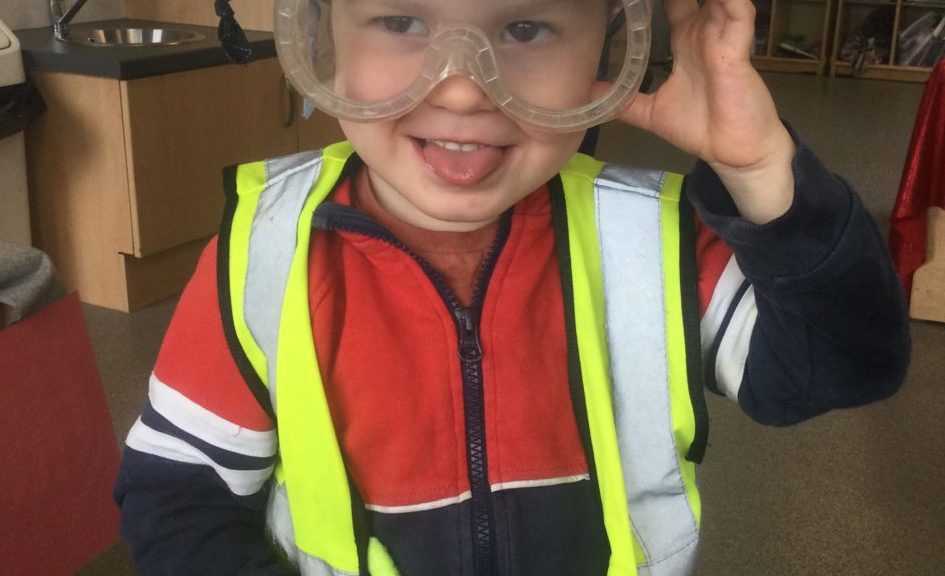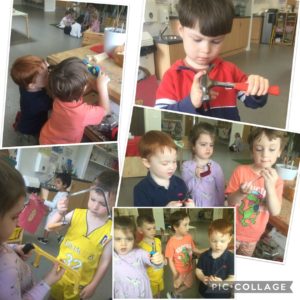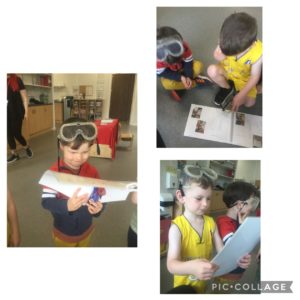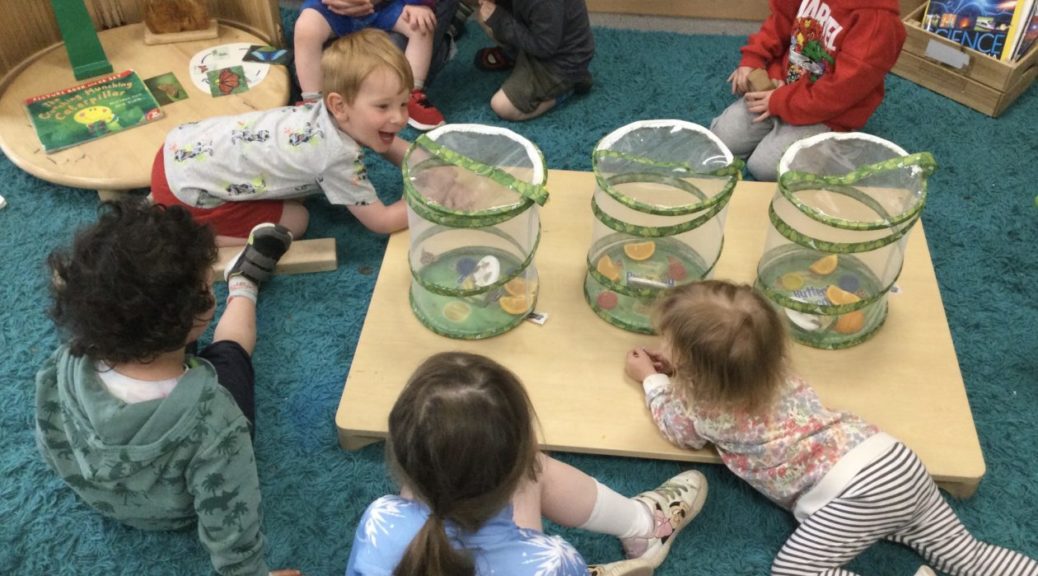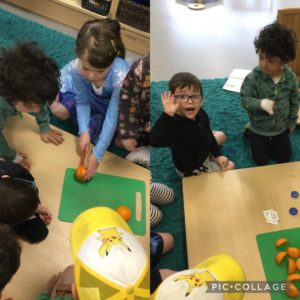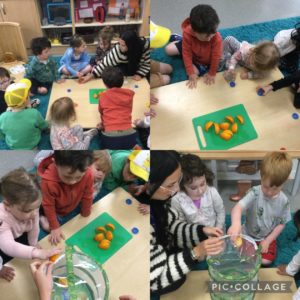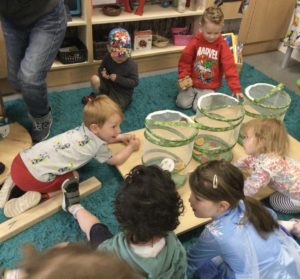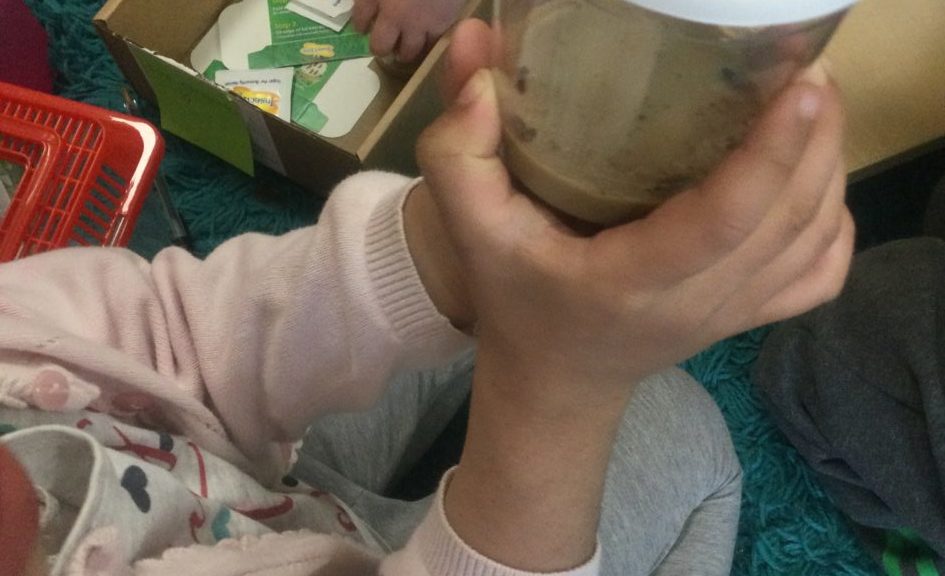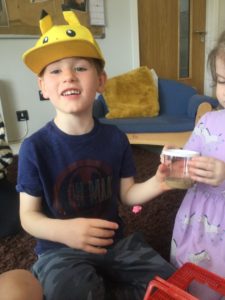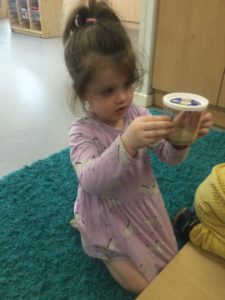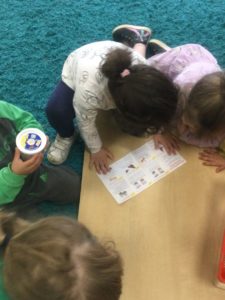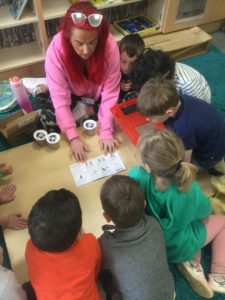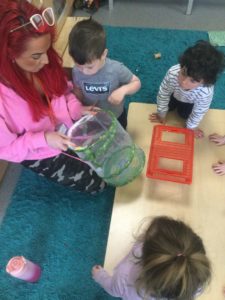Today in the discovery room the children were keen to open up the tinker table and use the tools, but before we could do that we had to do something very important.
The children gathered round and noticed the safety goggles under the bench. They tried them on and even collected hard hats from the block area . We discussed the rules of the tinker table and the purpose of our PPE for our new children and remind our returning children.
“ We need to wear safety goggles to stop things going in our eyes”
“ The helmet stops our head getting hurt”
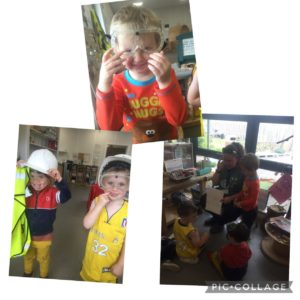
Next we explored the tools. I asked if the children knew what their names were and if they knew what their job was.
“I have a hammer, i can use the hammer to make something with the wood”
We had a look at the different shapes and sizes of all the tools.
“That one is pointy and that one is small”
“what’s this called?” “ I know that one is pliers”
The children had a great discussion on all the tools and told each other the names and what they do. We had a look at the plan book that other children had made, they drew what they planned to make and then selected the correct materials to make it.
This inspired the children to think of their own ideas of things they would like to make.
Our memories are now refreshed of the rules and are ready to start being creative. When we are finished at the tinker table we put our closed sign ( that the children made) up so that they know that the area is closed.

